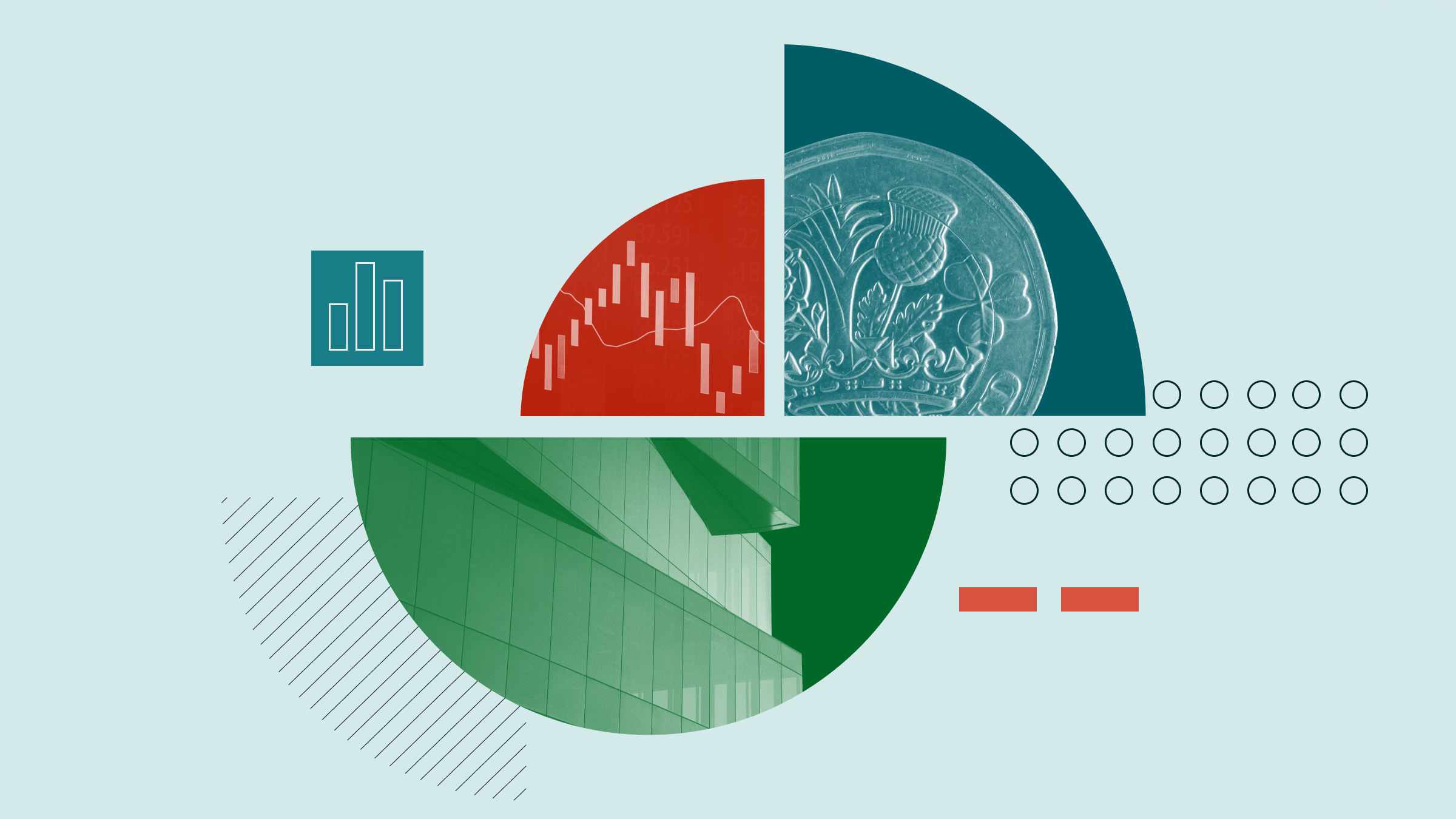
In the first week of February, yields on eurozone government bonds fell, after soaring in January. This doesn’t necessarily mark a reversal.
“The drop in yields in the euro area in early February was likely influenced by uncertainty over the announcement of US tariffs and the impact they could have on global trade and economic activity. President Trump specifically stated that Europe could be next on the US duty list,” says Dominic Pappalardo, chief multi-asset strategist at Morningstar Investment Management (MIM).
“Looking at German Bunds, for example, the term premium has increased and the yield curve has steepened,” Pappalardo continues, referring to a pattern where longer-dated maturities offer a higher yield than short-term ones. ”Short-term rates are likely to have fallen due to fears of negative economic news, while long-term rates have remained more stable due to the potential for a tariff-induced increase in inflation.”
Will European Government Bond Yields Rise Again?
Government bond yields generally move in the opposite direction of prices. As can be seen in the chart below, prices-especially in the medium-to-long maturities-fell in January, corresponding with the rise in yields, and then rose in the first week of February.
According to Pappalardo, yields could rise again due to one or more of the following factors:
• Signs of rising inflation in the eurozone: “If market participants believe inflation will rise, yields will likely rise, especially in intermediate and longer maturities,” says the Morningstar strategist.
• A pickup in economic activity: if macro data surprises on the positive side, the European Central Bank may slow the pace of interest rate cuts.
• The dissipation of fears of tariffs on Europe and a global trade war: “If President Trump were to somehow signal that the EU will not be subject to new tariffs, uncertainty would dissipate from the market and the recent drop in yields could be nullified,” Pappalardo explains.
But investors also need to look at what is happening in the US. Rising US treasury rates and the strengthening of the dollar could, in fact, raise yields in the euro area, because investors would tend to sell government bonds to buy US bonds, which are considered more profitable.
At the moment, markets have all these assumptions in front of them, but few certainties, which generates volatility in fixed income.
US Tariffs on Europe: What do They Mean for Government Bonds?
If US tariffs on European goods become a reality, there will be an impact on eurozone growth, which would exacerbate the current fragile situation of the Old Continent’s economy. The issue of growth is becoming more urgent than that of inflation, according to many experts.
“Tariffs will have an impact on eurozone growth,” Henrietta Pacquement, head of global fixed income at Allspring, tells Morningstar. “Of course, it is yet to be seen to what extent and whether they will be implemented. President Donald Trump seems interested in negotiating, so we have to see what will happen in concrete terms.”
According to Pacquement, inflation is much less of a problem in Europe than in the US, so recent increases will not be enough to impact the ECB, which will continue with a data-dependent approach. According to preliminary Eurostat estimates, prices in the euro area grew 2.5 percent in January, above expectations, for the fifth consecutive month.
“US tariffs will be a blow to European growth,” Nomura economists say in a Feb. 3 report. “We estimate that the direct impact of the 10% tariffs will reduce European growth by about 0.3 cumulative percentage points over the 2025-26 period, with the risk of a larger impact on growth due to uncertainty.”
If Trump were to impose higher tariffs, the impact would be greater on European growth, while it should remain limited on inflation, although some of the higher costs will be passed on to consumers. For Nomura, “US tariffs on China could be deflationary for Europe.”
German Elections: Will the Bund Remain a Safe Asset?
There are not only US tariffs that may move euro area bond markets in the coming months, but also the elections in Germany, which will be held on Feb. 23. The formation of a new government offers an opportunity for structural reforms to support the economy. In 2024, gross domestic product (GDP) fell by 0.2%, after -0.3% in the previous year, according to estimates released by Destatis.
The key issue for bond markets is--according to Allspring’s Pacquement--the possible revision of the debt brake that has been a cornerstone of German fiscal policy since 2009. This fiscal rule has avoided serious structural deficits, but today the macro situation has become more challenging. “A revision of the debt brake would be good for growth, but it would imply more government bond issuance,” explains Pacquement, who adds that he believes this is already priced in by markets and that the German bund can continue to be a safe asset for investors.
Government Bonds: Political and Fiscal Uncertainty Weighs on France
More than a larger German deficit, it is the situation in France that is worrying markets. According to Neil Mehta, portfolio manager at RBC BlueBay, “French bond risk premiums will remain elevated” in the face of continued political instability until at least 2027 when there will be the next presidential election.
“French 10-year bond spreads (OAT) are 30 basis points wider than a year ago after the snap elections called by Emmanuel Macron and the political uncertainty that followed,” Metha explained in a Feb. 11 note. “The limited policy space means that the budget deficit will fall modestly this year to 5.4% from 6% last year. Nominal GDP is below 3%, so it will be difficult to close this gap. Even more important is France’s fiscal forecast record, which seems to be not the best.”
Investors are less concerned, however, about the Italian situation. “The spread between BTPs and Bunds remains at low levels and yields attractive,” says Pacquement, who points out that Italian government bonds may also benefit from high demand from domestic investors.
Where to Look for Yield in Fixed Income?
Portfolio managers and strategists emphasize two main sources of return for those investing in European bonds:
• Coupons, rather than rising bond prices.
• Investment grade corporate bonds amid tight spreads in the credit market.
Although central banks, including the ECB, have begun to cut interest rates, yields remain above historical averages. “Inflation has declined, making real yields positive,” explained Flavio Carpenzano, investment director for fixed income at Capital Group in a Feb. 5 webinar. “High initial yields are a good indicator of future returns, and fixed income could provide solid returns, mainly from the coupon, without the need for significant price appreciation and rate cuts.”
For Simon Blundell, co-head of BlackRock’s European Fundamental Fixed Income team, European bonds offer better valuations than U.S. bonds. “Duties worry and encourage an investor flight to safe and quality assets (flight to quality), and safe portfolios traditionally have a share of bonds,” he tells Morningstar in a Feb. 10 interview.
Blundell also warns that volatility is quite high in the government bond market and will remain so for some time. This generates opportunities for investors, but “an active approach is needed.” For example, the BlackRock manager is moving to shorter maturities, “because we are not compensated for the risk of longer duration.” He also sees government bonds as a hedge against risk, but he is also convinced that corporate bond fundamentals are solid and that European credit markets offer an attractive income opportunity, although spreads have narrowed. In short, higher quality and shorter duration to be ready when an economic downturn comes to be ready to increase risk when valuations compensate investors better.
Also according to Amundi, yield volatility requires “an active and tactical approach to duration,” but since yields are “historically attractive,” the management company has “slightly revised [its] duration position upward, especially in Europe.” It also maintains “a positive view on investment grade bonds.”
Capital Group’s Carpenzano says he favors higher quality investment grade credit, so he gets “better relative value than the riskier end of the credit markets, as spreads are compressed across the risk spectrum.”
Robert Van Den Oever, editor of Morningstar in the Benelux, contributed to this article.
The author or authors do not own shares in any securities mentioned in this article. Find out about Morningstar's editorial policies.



























